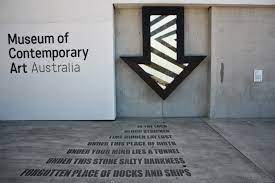“The pleasure of the text is that moment when my body pursues its own ideas—for my body does not have the same ideas I do” – Roland Barthes.
Picasso, Still Life with Chair Caning, 1912.
Joy, Jouissance, Journal: the “doing” of collage.
Organsing a collage for family brought the simplest pleasure. I was reminded of a lecture that suggested a collage torn piece with the lettering Jou suggested joy or playfulness, a game as well as Le Journal. My lecturer reframed Picasso’s collage Still Life with Chair Caning, oil cloth 1912 and presented the frame: A game? Caning suggests for some, from catholic school to public education, discipline and chastisement for wrongdoing. Until it was seen as child abuse, the cane brought many literally to their knees for a bare back side whip or a rap across the knuckles (often a ruler). Chair caning, or the chairness of the chair has the bottom in mind for socialising, resting, eating and playing board games. The essential use of a chair, to sit and communicate with others or to solitary enjoyment has been fragmented: the still life reveals partial life and beyond my own, my grasp and my chair. The caning is familiar from my childhood; we had those chairs with a dark wooden stain. They remind me of family gatherings, celebrations and stillness walking by and seeing them under the table, waiting for use and out of the way or my path walking by. The pattern is familiar.
As I sat tearing pieces of paper from a magazine for others to use I felt joy: the sound of tearing, gentle and low coupled with the ripping from my fingers was mindfulness in motion. I tried the collage and the game extended to the application of paper, glue and fast fingers onto cardboard. The rhythm caught in ‘doing” took me out of time, out of my day and the simple joy I felt was unusual at that moment.
Reading the newspaper for Picasso is different from today’s social media and access to a variety of platforms all-at-once. The sound of pages turning, just like ripping has gone. Mimicked sound on devices is not the same. The cerebral connection between black smudged newsprint on thumbs and finger tips with the engagement of rustling large papers and stories – engaging, personal interest or simply read on a Sunday afternoon has changed.Swiping pages opens doors – no more wiping fingers and I can read on the treadmill, listen to podcasts walking and don’t need to sit and manually turn a page. The game has changed. The Journal and way to journal has also changed. This transition into technology has altered collage: I can make a digital one instead. Pieces fit and colours can dim, blend, or simply change. No need to cruise papers and magazines for an eye catching connection with a misprint, colour, advertisement. Google can do that just as well as photo APPs.
Roland Barthes’ The pleasure of the text, (1973) presents some with a “rich tapestry of ideas” connected with the body: the body enjoys, experiences and reads the text for pleasure. Barthes’ writing examines the way we can explore contradictions, silences, sounds and rhythms through spoken and written texts: the joy that reading can offer! My collage offered a mindful or automatic approach to a moment, like unbottling the sea something flowed out unpredictable and unmanaged. If you have ever been confronted (and quite aggressively more like walking into a brick wall than an opening filled with curiosity, discussion and disagreements with acceptance) with the comment “Read it and weep” this moment and memories of reading Barthes re-writes and reframes the conflict: feeling small joys alleviates more wrongs. Processing and “doing” becomes enjoyable with spontaneous, unplanned moments like collage. And, to finish my comment through the silences and rhythms that tearing revealed, my thoughts about Picasso and a lecture coupled with collage preparation and “doing” unfolded with a memorable quote from Barthes:
“The text is a system suspended between desire and its destruction, between production and the silence of disappearance” – The Pleasure of the Text (1973).
Roland Barthes (first published 1973). The Pleasure of the Text.
© Cate Andrews, 2024.




You must be logged in to post a comment.